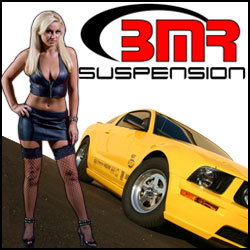Full_Tilt
forum member
- Joined
- Jan 20, 2011
- Posts
- 1,697
- Reaction score
- 1
So my car wheel hops... quite badly. Ive probably actually spun the tires only a handful of times, all the other times it has started hopping and Ive had to let out immediately fearing Ill hurt the driveline.
The cure for this seems to be replacing the flimsy lower control arms and possibly even lowering the rear mounting point of the lower control arms in order to create more anti-squat. I like the idea of more anti-squat as it should allow you to hook up and accelerate out of the corner earlier.
Here is where my question comes in. If I understand correctly, shouldnt angling the control arms more upward, as you would to create more anti-squat, also induce more roll oversteer? I always though that they tried to make the control arms on a live axle angle downward from the rear, so that when the body rolled one way, the axle would steer the other way, inducing understeer.
So, do you just take the added roll oversteer with the anti-squat and tune it out with the rest of the suspension? or do you keep the stock mounting locations and live with the squat?
The cure for this seems to be replacing the flimsy lower control arms and possibly even lowering the rear mounting point of the lower control arms in order to create more anti-squat. I like the idea of more anti-squat as it should allow you to hook up and accelerate out of the corner earlier.
Here is where my question comes in. If I understand correctly, shouldnt angling the control arms more upward, as you would to create more anti-squat, also induce more roll oversteer? I always though that they tried to make the control arms on a live axle angle downward from the rear, so that when the body rolled one way, the axle would steer the other way, inducing understeer.
So, do you just take the added roll oversteer with the anti-squat and tune it out with the rest of the suspension? or do you keep the stock mounting locations and live with the squat?



